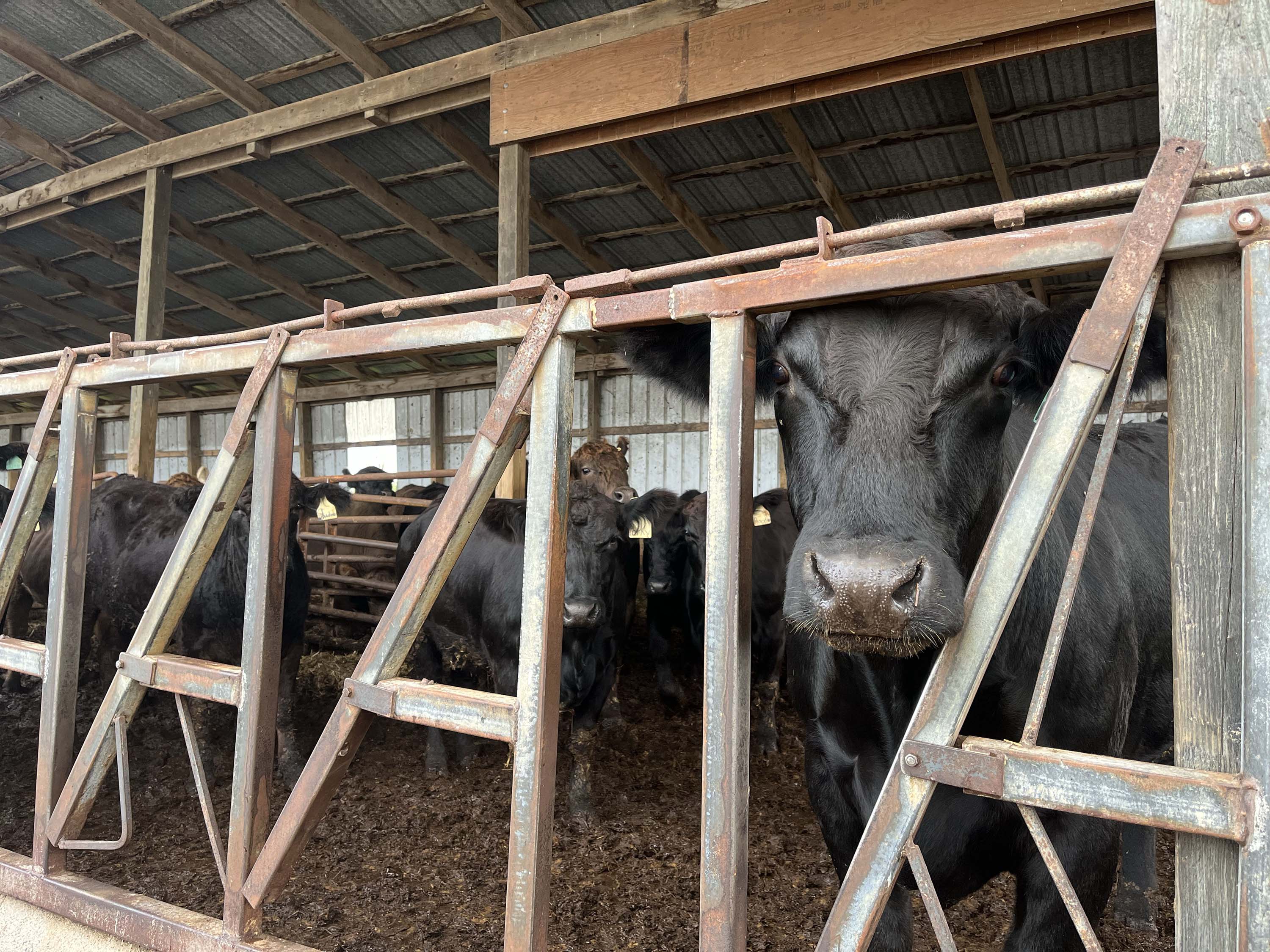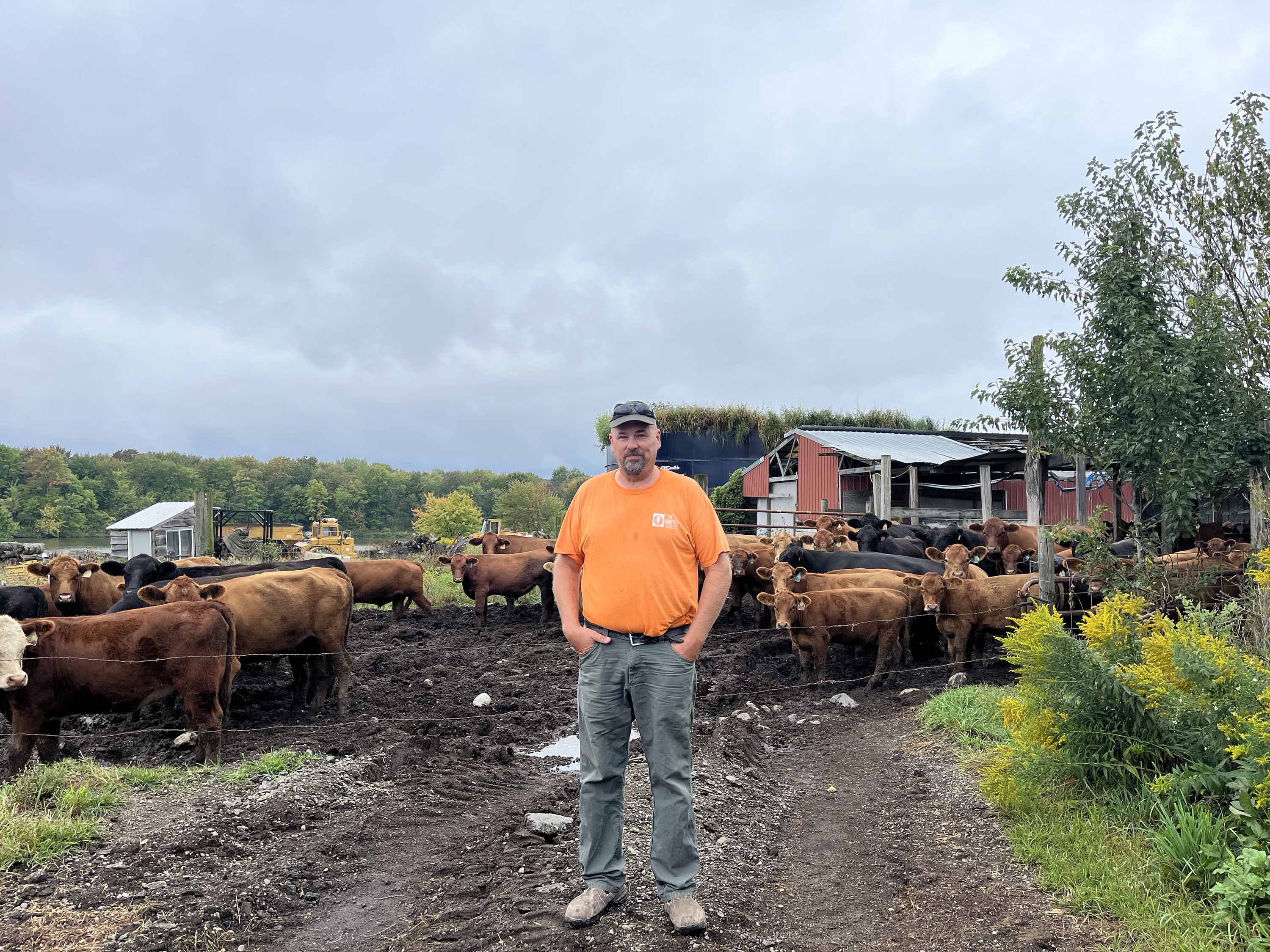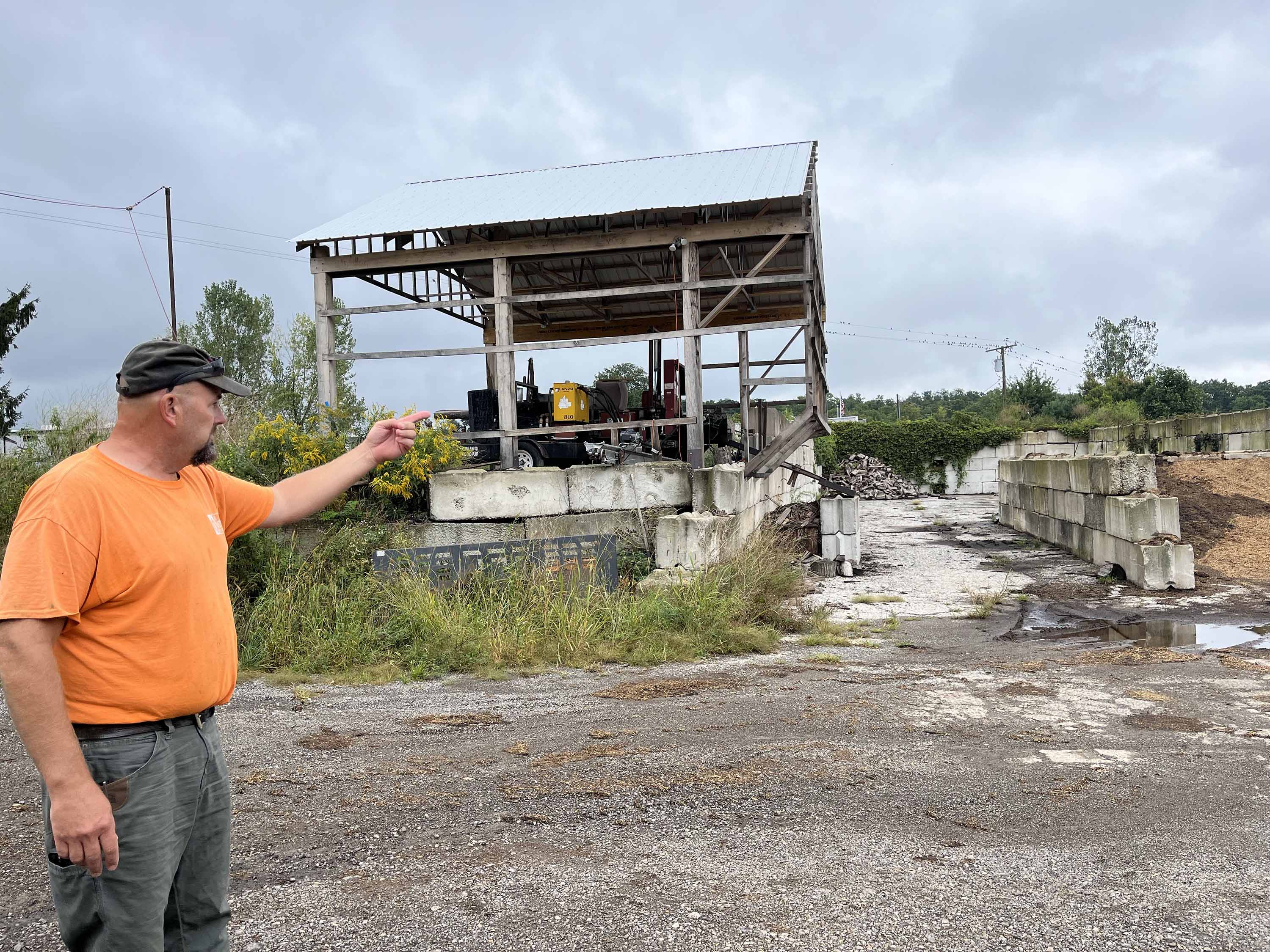Jason Grostic spends his days caring for cattle he’ll never sell. His 400-acre farm is covered with empty fields that may never again grow crops. Feed bins sit mostly empty. Every pasture except one is off limits to the cows now stuck in his barn.Just a few years ago, Grostic Cattle Company was a booming family-owned non-GMO beef business in Brighton. The farm that once belonged to his grandfather was growing more profitable every day. And then, with one Zoom meeting in 2022, everything changed.
Grostic listened in disbelief as state officials explained that his farm was contaminated with chemicals called per- and polyfluoroalkyl substances, or PFAS. The toxic substance used in everyday items from nonstick cookware to firefighting foams were in the wastewater sludge sold to him as biosolid fertilizer. State officials told Grostic that PFAS now tainted his soil, his pond, his crops and even his cattle. His livelihood was gone in an instant.

“There’s no future left,” Grostic said. “There’s no income, there’s no nothing. Yet I’m stuck here every day maintaining a farm with no profits.”
Today, Michigan State University researchers are trying to help with support from the State of
Michigan and other funding agencies. They’re testing his cattle to study whetherthe chemical dissipates over time. They’re looking for soil amendments that could keep PFAS from being drawn up into plants or flowing into water. The university is paying to feed and bed his cattle as well as the electricity to keep the farm running. To Grostic, an MSU graduate himself, their research is a godsend.
Community partners like Grostic are at the heart of MSU’s Center for PFAS Research. Formed in 2020, the interdisciplinary center has positioned itself as the go-to location for agricultural and natural resource PFAS research in Michigan. Next month, PFAS experts will converge at MSU for the third Annual Symposium. This year, the symposium will focus on challenges and solutions for freshwater systems and the Great Lakes. Director Cheryl Murphy said their goal isn’t just to talk about the problems, but to leave with solutions. Previous events have led to successful grant applications and new collaborations that helped advance the science, Murphy said. “I’m excited about different entities coming together, like NGOs, industry, government and tribal government,” Murphy said. “It brings everybody to the table so we can look at the problem from different perspectives. It leads to good research so we can find solutions and help keep our Great Lakes safe.”
‘Messer-upper’ chemicals
PFAS was created by chemists in the 1930s looking for an oil, grease and water repellent. They’re made up of carbon-bonded fluorine, which Murphy said is one of the strongest bonds in chemistry. The bond is unique because it has a hydrophilic part, or water-loving, as well as a hydrophobic part. It forms an impenetrable barrier that makes these chemicals desirable for fire-fighting foam, food packaging, waterproof tents and even dental floss.

The problem is these chemicals are now in our environment. It’s released by industries that make products containing PFAS into wastewater. Military bases and airports that use certain firefighting foams are also major sources. Now, PFAS is in our soil, our water, our food, and even in our bodies. It’s been found in polar bears in the Arctic, and in Inuit communities far from any industries. And once PFAS there, it doesn’t break down.
Researchers are only beginning to understand how PFAS affects human health, largely because there are thousands of types of molecules to study. Murphy explains PFAS as systemic toxicants. As they build up in the human body, they disrupt cell functions, leading to cancers, metabolic disorders, immune system dysfunction and other problems. Children are especially vulnerable to the potential impacts.
Complicating the issue is the sheer number of PFAS chemicals that exist.
“There are over 12,000 of these chemicals,” Murphy said. “And we really only have a handle on a few of them and can reliably measure 40 of them.”
Michigan leading the way
PFAS came to the forefront in Michigan when officials discovered contaminated sites, including waste dumped by Rockford’s Wolverine Shoe Company in 2017. As the state investigated, officials realized the problem was more widespread than they’d feared. That same year, then-Gov. Rick Snyder signed an executive order establishing the Michigan PFAS Action Response Team.
Murphy and other MSU researchers wanted to help. With support from MSU AgBioResearch, they formed a working group to determine how their work could lead to solutions to this massive problem.
“At that time, we were thinking, what can we do to respond to this concerning development?” Murphy said. “How can we, as a land grant institution, help our state and the citizens of Michigan?”
As the group dug into the problem, they realized it was an issue that spanned departments and colleges. With the support of AgBioResearch and grant funding, the Center for PFAS Research was born in 2020.
One of the Center’s primary services is its analytical lab. This facility allows the Center to measure PFAS levels in a variety of substances and helps them conduct projects with community partners around the state. Nearly 50 MSU faculty from across the university also joined the Center to work on PFAS challenges and use their expertise to understand the chemical and its effect on health and the environment.
Raising awareness
A. Daniel Jones, professor of biochemistry and molecular biology and the center’s associate director, said part of the center’s role is raising awareness. This is especially important for people who rely on private wells for drinking water.
Recently the EPA issued a rule requiring public drinking water systems to essentially filter out all PFAS from its water. However, this does not apply to private wells. That’s an issue for homes near military bases that use PFAS-containing firefighting foam to put out fires.
“These wells aren’t regulated at all,” Jones said. “In many cases, these chemicals migrate through the soil. They’re in the groundwater, especially if you’re near a contaminated site.”
Susan Thiel has lived Camp Grayling, a National Guard training facility, for 28 years. It’s where she raised her daughter and two stepsons. In 2016, the military asked to test her well. It was one of many others to test positive.
“It’s very distressing,” Thiel said. “My first thought was, I fed my children this water. What is it going to do to them?”
Thiel and other residents worked with the military and state agencies to form a Restoration Advisory Board, or RAB, to work with the military to pursue source testing and look for residential impacts. They learned that the contamination also reached Lake Margrethe and Portage Creek, which feeds into the upper Manistee River.
As they worked with the Michigan Department of Environment, Great Lakes and Energy and the Department of Health and Human Services, the residents wanted their own expert. With the help of grant funding, they hired Jones to be their advisor and provide them with his educated opinion and research.
Today, the RAB and partnering agencies are pursuing grant funding to connect Grayling homes to municipal water as well as remediation of contamination sites. Throughout the process, Jones has answered questions, made suggestions and provided a network of information outside the community. Thiel said having Jones on their side is reassuring to residents who might be suspicious of military and the government.
Jones is also raising the caution flag as scientists develop new chemicals to replace PFAS. He urges industries to create chemicals that don’t last forever, or that end up also harming human health.
“It takes a long time and a lot of investment to figure out whether chemicals are harmful,” Jones said. “Most of what we know about the potential harm only comes after harm has already been done.”
Soil problems
PFAS can be filtered out of drinking water with granulated activated charcoal and then incinerated at a high heat. Soil, however, is more complicated because it can’t be incinerated.
Hui Li, a professor of environmental soil chemistry, said PFAS doesn’t stay in the soil forever once it’s there. Plants that grow in that soil can take up PFAS along with other nutrients in water flow. Those crops are then PFAS-contaminated and unsafe for animals or humans to eat.

Li is working on a U.S. Department of Agriculture-funded project to develop a soil amendment that would sequester PFAS in the soil. The idea is that while the chemical wouldn’t be destroyed, plants could grow without taking up much PFAS. It isn’t a final solution since PFAS is still in the soil, but Li hopes it could be used as an emergency solution, like Grostic’s farm. Li and other researchers are working closely with Grostic, with support from the State of Michigan and other funding agencies in hopes of finding a way to make his land usable again.
Farms are particularly difficult to address because of their size. Methods like soil washing are too expensive for hundreds of acres of land, and then there’s the issue of the cattle grazing on contaminated fields. Tackling a project like Grostic’s farm requires cattle experts, plant experts, soil experts and several other researchers. It’s exactly the kind of project the Center was designed to do, Li said.
“The PFAS Center brings scientists and engineers from different disciplines together to communicate and collaborate,” Li said. “All of these issues have a social and economic impact. As we work together from our own angles, we can figure out some way to find the best solution for mitigating PFAS on farms.”
More work to be done
Researchers are still in the early phases of understanding PFAS and the full extent of its impact. There’s more work to be done in finding ways to mitigate the damage that’s already been done and prevent future damage, whether from PFAS or other chemicals still to come.
Murphy believes this is an opportunity for MSU to make a valuable impact. By partnering with the state and communities around Michigan, the Center for PFAS Research has a chance to help people and make groundbreaking discoveries in this crucial science.
The October symposium is another chance for collaboration, Murphy said. It’s a potential springboard for projects that could make a real difference.
This story was originally featured on the Water Alliance website.